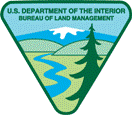United States Department of the Interior

United States Bureau of Land Management: Staff Publications
Date of this Version
2005
Abstract
This technical note describes how big sagebrush habitats (Artemisia tridentata, including Wyoming, basin, and mountain subspecies) are being assessed and managed at multiple spatial scales within a Bureau of Land Management resource area in southeast Oregon. It shows how the assessment results can be used to make determinations pertaining to standards and guidelines for greater sage-grouse and other animals that use sagebrush habitats. In this example, the assessment included information at the broad-scale (Interior Columbia Basin Ecosystem Management Project; 145 million acres), mid-scale (Southeast Oregon Resource Management Plan-Final Environmental Impact Statement; 4.6 million acres, and Louse Canyon Geographic Management Area; 0.52 million acres), fine-scale (pasture; less than 2,000 to 88,000 acres), and site- or local-scale (ecological site; variable in size but typically smaller than pasture) levels. The scales are interrelated and played equally important roles in building management objectives. Big sagebrush canopy cover structural classes were created, which were the basic building blocks of the sagebrush objectives and which addressed spatial patterning of habitat structure, connectivity, and fragmentation, as well as the cumulative effects of disturbance from fires and land treatments. Findings from the Interior Columbia Basin Ecosystem Management Project and more local information from the Jordan Resource Area of BLM’s Vale District were used to guide development of mid-scale big sagebrush habitat objectives. This example provides other BLM field offices in the sagebrush biome with ideas for how they might develop their own multiple-scale big sagebrush assessment to achieve land use plan objectives and rangeland health standards.


Comments
Published by Bureau of Land Management, Technical Note 417, August 2005.